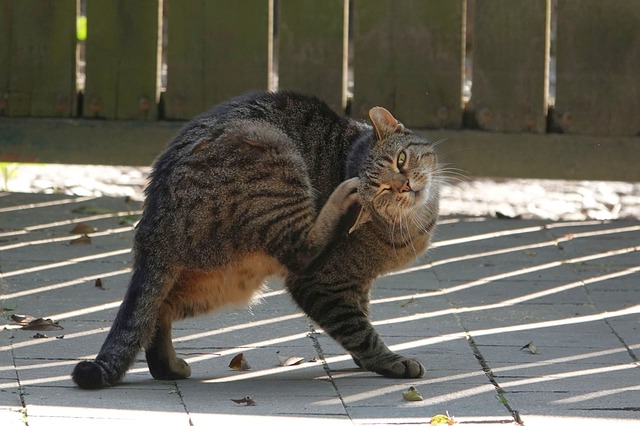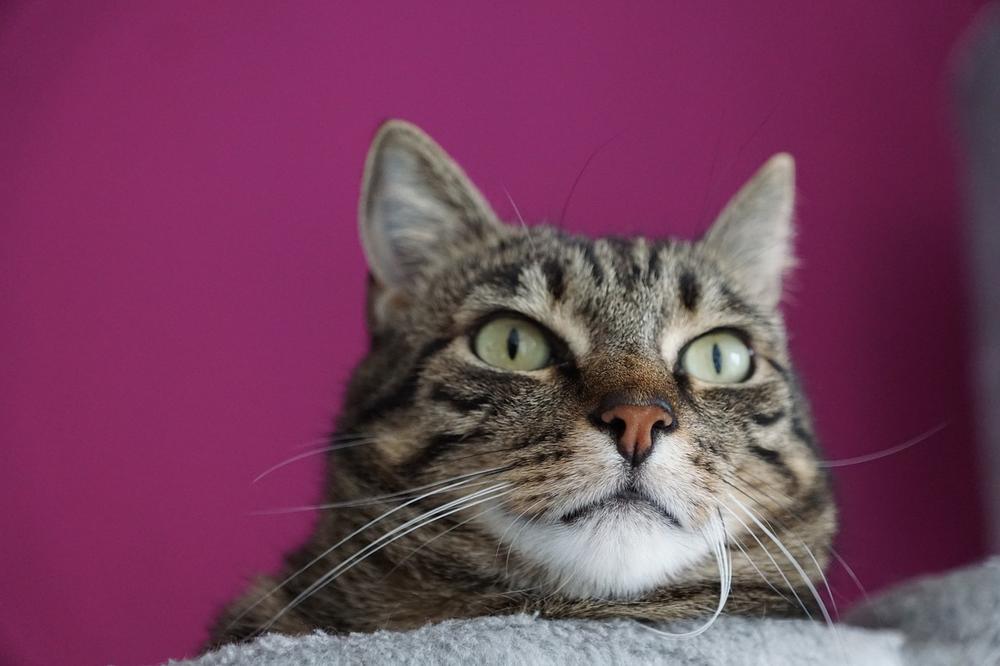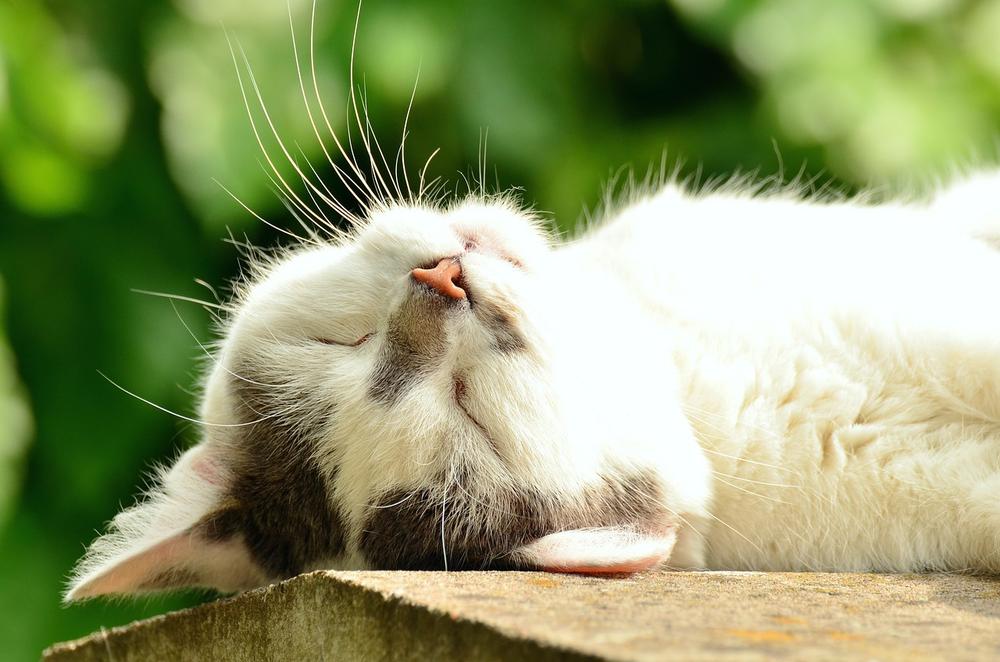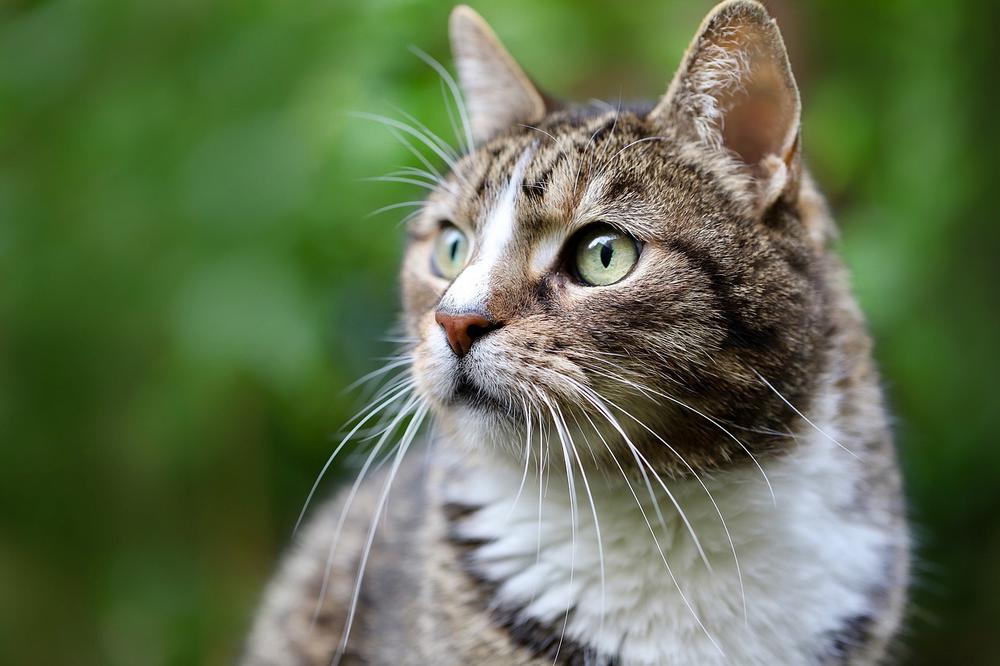Fleas on Your Cat's Face? Here's You Should Do RIGHT NOW

Worried feline lovers.
You've seen those pesky fleas taking residence on your cat's adorable face, and the panic has set in. But hold up, are we really going to let those little critters win? 😱
Let's dive into this together and find the answers you seek, shall we?
Natural Remedies for Treating Cat Acne
When it comes to treating your cat's acne naturally, try these 10 simple remedies:
- Apply a warm compress to reduce inflammation.
- Cleanse your cat's face with warm, soapy water.
- Spot clean with a washcloth, sponge, or cotton round.
- Avoid sensitive areas like the eyes, ears, nose, and mouth.
- Use an anti-bacterial soap for cleaning.
- Rinse thoroughly after cleansing.
- Keep your cat's bedding clean and free of oils.
- Ensure a balanced diet rich in vitamins and minerals.
- Provide fresh water at all times.
- Consult a veterinarian for guidance on flea treatment.
Additionally...
Each cat is unique.
What works for one may not work for another.
So consult with your vet for tailored advice.
With that being said, take care of your cat's skin and see the improvements! 😺
Main points I'll expand upon further down this article:
- Fleas on a cat's face can cause severe itching, discomfort, and anemia.
- To treat fleas on a cat's face, give a gentle bath using warm water and fragrance-free dish liquid or natural baby shampoo within 2 minutes.
- Create a ring of soapy water around the neck as a barrier for fleas while washing the cat's body.
- After rinsing thoroughly, towel dry and use a blow dryer on a low setting, held at a distance of 2 feet, to prevent overheating.
- Flea baths can help get rid of immediate flea infestation, but long-term prevention is achieved through topical or oral treatments.
- Check for fleas on the cat's face using a flea comb or fingers, paying attention to areas like the face, belly, and armpits.
- Take immediate action if you spot any fleas or flea dirt and use a flea comb to remove them from the cat's fur.
- Watch for signs of fleas such as scratching, excessive grooming, hair loss, scabs, or anemia and seek veterinary assistance.
- Fleas can transmit diseases, so it's important to act quickly and effectively.
- Use flea sprays, vacuum cleaners, hot soapy water, and disinfectants to eliminate fleas from your home, along with professional exterminators if needed.
And it gets better...
Discover the most effective ways to treat and prevent fleas on your cat's face in the next section, including expert advice on topical and oral treatments.
You won't want to miss it!
Treat Fleas With a Dish Soap Bath
When it comes to treating fleas, a dish soap bath can be a helpful option.

So let's talk about how to do it right:
- Start by gathering some essentials. You'll need warm water, fragrance-free dish liquid or natural baby shampoo, and a towel.
- Fill a sink or basin with warm water, making sure it's not too hot for your kitty.
- Add a few drops of essential oils, like lavender or lemongrass, to the soapy water. This can help repel fleas naturally.
- Gently place your cat in the water, making sure to avoid their face and ears.
- Use your hands or a soft cloth to lather up the soapy water and create a barrier around their neck to deter fleas from moving up.
- Keep the bath time short, aiming to complete it within 2 minutes to prevent panic or chilling.
- Rinse thoroughly with clean water, ensuring all the soap is washed away.
- Towel dry your cat gently, avoiding any rough rubbing that could cause discomfort.
- For an extra step, consider using a blow dryer on a low setting held at a distance of 2 feet and oscillating to prevent overheating.
- While flea baths can eliminate immediate infestations, long-term prevention is best achieved through topical or oral treatments.
And now I want to share with you some additional tips for treating fleas on your cat's face.
By shining a bright light and using a flea comb, you can effectively spot and eliminate these pesky pests before they cause further harm to your furry friend's health...
Check for Fleas
Here's how to check for fleas on your cat in 10 simple steps:
- Light up your cat's face and comb thoroughly.
- Use either a flea comb or your fingers to find fleas and flea dirt.
- Pay close attention to her face, belly, and armpits where those pesky fleas usually hide.
- Keep an eye out for signs like scratching, too much grooming, or hair loss – they could indicate fleas.
- Be on the lookout for scabs, skin infections, or anemia, which are all linked to fleas.
- If you're dealing with a three-month-old kitten with fleas on her face, take immediate action.
- Take her to the vet to check for signs of dehydration, lack of appetite, or lethargy.
- Use a flea comb to get rid of fleas, eggs, and larvae from her fur.
- Don't waste any time tackling those fast-moving, small, dark brown bugs head-on.
- Consult your veterinarian for additional help in preventing diseases like flea allergy dermatitis or cat-scratch disease.
You must act swiftly and effectively to safeguard your cat's health. 😀
Ensure you have all the necessary tools, such as flea combs and treatments, to effectively eliminate these nuisance pests.

And if you're wondering why your cat's nose is crusty and black, don't worry, I've got you covered.
In my article, I delve into the possible reasons and solutions for this common issue.
So if you're feeling concerned or frustrated, I highly recommend checking out Why Is My Cats Nose Crusty and Black.
It's a guide that will provide you with the answers you're looking for to keep your furry friend happy and healthy.
Feline Acne vs Flea Dirt
Grab a magnifying glass, my friends, and study the minuscule black specks nestled within your feline companion's fur.
Now, when those tiny flecks dissolve into brownish-red streams upon contact with moisture, you can bet your bottom dollar that what you're dealing with is flea dirt, not pesky acne. Ah, but let's talk about another worrisome discovery - that black mucus-like substance coating sweet Fluffy's delicate eyes.
Fear not, my fellow cat lovers!
While it may cause concern, fret not. The presence of those small black flecks at the base of their majestic fur coat signifies one thing and one thing only:
The infamous infiltration of fleas, much to our feline's dismay.
Effective Ways to Eliminate Fleas From Your Home
Wash and clean to get rid of fleas
To eliminate fleas in your home, you need to get your hands dirty and start cleaning.
Here are some easy cleaning methods that can help you eliminate those pesky fleas:
### Wash your cat's bedding
Fleas love to hide in cozy spots like your cat's bedding.
So, give it a good wash in hot water with white vinegar.
This will kill any remaining fleas, eggs, or larvae.
### Vacuum thoroughly
Vacuum cleaners are not just for dirt and dust.

They're also great at sucking up flea eggs and debris from different surfaces. Grab your vacuum cleaner and give your floors, furniture, and pet's bed a thorough vacuuming.
Remember to dispose of the contents properly after vacuuming.
### Clean with soap and disinfectant
Washing your cat's bedding, blankets, and toys with hot, soapy water is recommended to get rid of fleas.
Additionally, wipe down hard surfaces and toys with a disinfectant solution to prevent future infestations.
Seek professional help for stubborn fleas
If the fleas in your home refuse to leave, no worries... There are effective options available for you:
### Consult an exterminator
Sometimes, fleas can be incredibly stubborn and may require the expertise of a professional exterminator.
These experts have the knowledge and tools to tackle tough flea infestations and provide long-lasting solutions.
### Try household flea sprays
Household flea sprays can be a convenient way to break the flea life cycle in your home.
These sprays target fleas at all stages, from eggs to adult fleas. Follow the instructions carefully and spray in areas where fleas are likely to hide, such as carpets, rugs, and cracks in the floor.
Fleas can be annoying, but don't worry—you can take action with these effective methods and seek professional help when needed to regain control of your home and keep it free from fleas.
How to Prevent Fleas
Preventing fleas ain't easy, but there's hope for you.

Here's what you can do:
- Brush that cat of yours regularly. Use a fine-toothed comb to get rid of any sneaky flea eggs or larvae hiding in its fur.
- Neonatal kittens need special treatment. Avoid using chemical stuff on them. Stick with vet-recommended flea and tick treatments that won't harm these sensitive youngsters.
- Get your hands on a flea collar. It'll protect your cat for months - up to 6 to 8! Isn't that something?
- Consider oral flea products like pills or chews. Your vet needs to prescribe them, but they work against fleas, ticks, heartworms, and tapeworms. Talk about efficiency!
- But be careful with the Permethrin. It's downright lethal for cats. Keep it far away from them. And if you have dogs too, don't let them mingle for at least 24 hours after using anything with Permethrin.
- Consistency is key, my friend. If all your furry buddies are dealing with fleas, treat them all. No playing favorites here.
- Don't forget to double-check those indoor sprays. Make sure they're completely dry before unleashing your cat on them.
Stick to these tips, and your beloved feline will stay flea-free, happy, and healthy.
And that wraps up today's article.
If you wish to read more of my useful articles, I recommend you check out some of these: Can a Cat Get Pregnant When Not in Heat, My Cat Is Not Eating Force Feeding Your Cat, Cleaning Cats Paws After Litterbox, Is Dracaena Toxic to Cats, and Cat Purring Effect on Humans
Talk soon,
-Sarah Davis